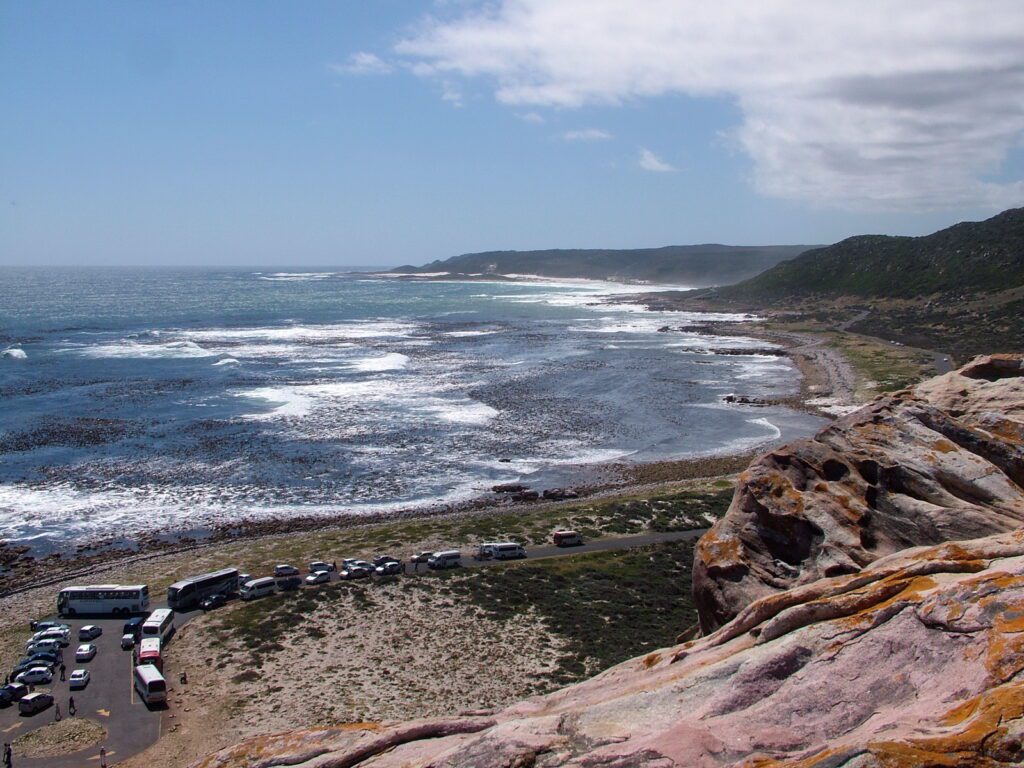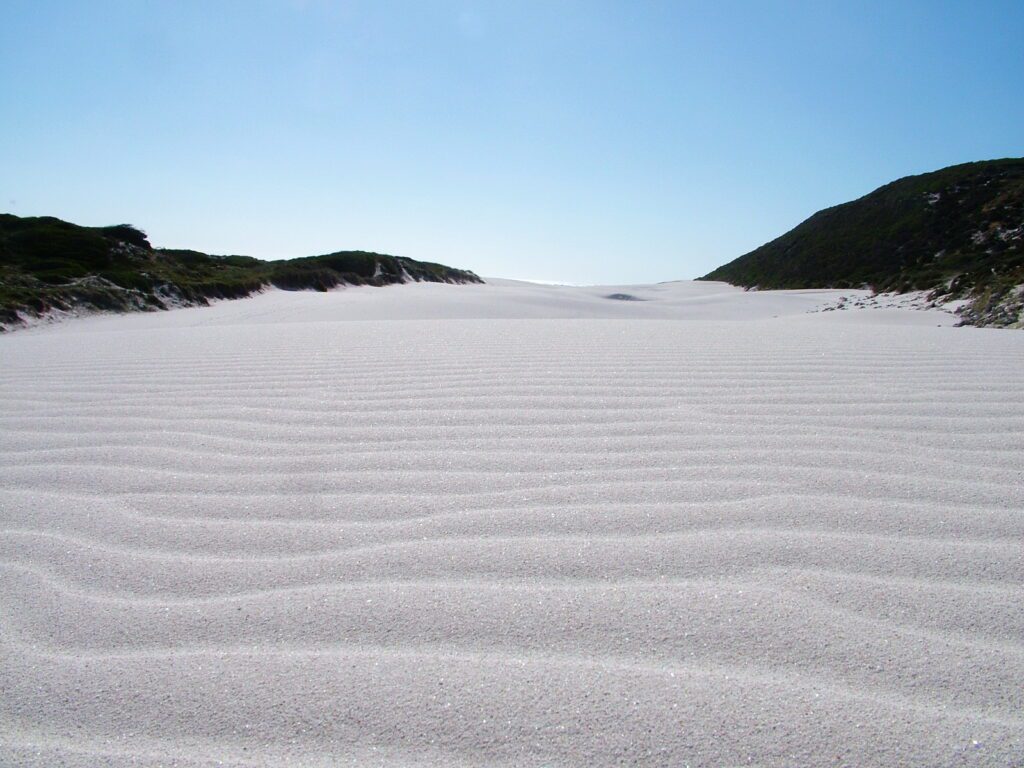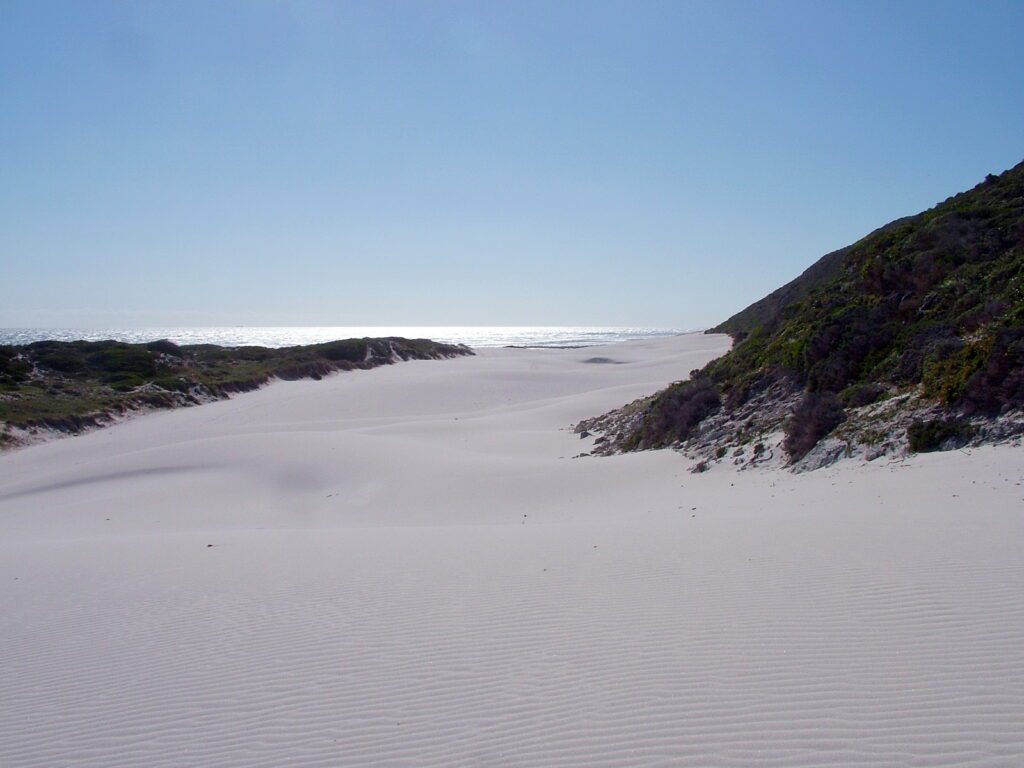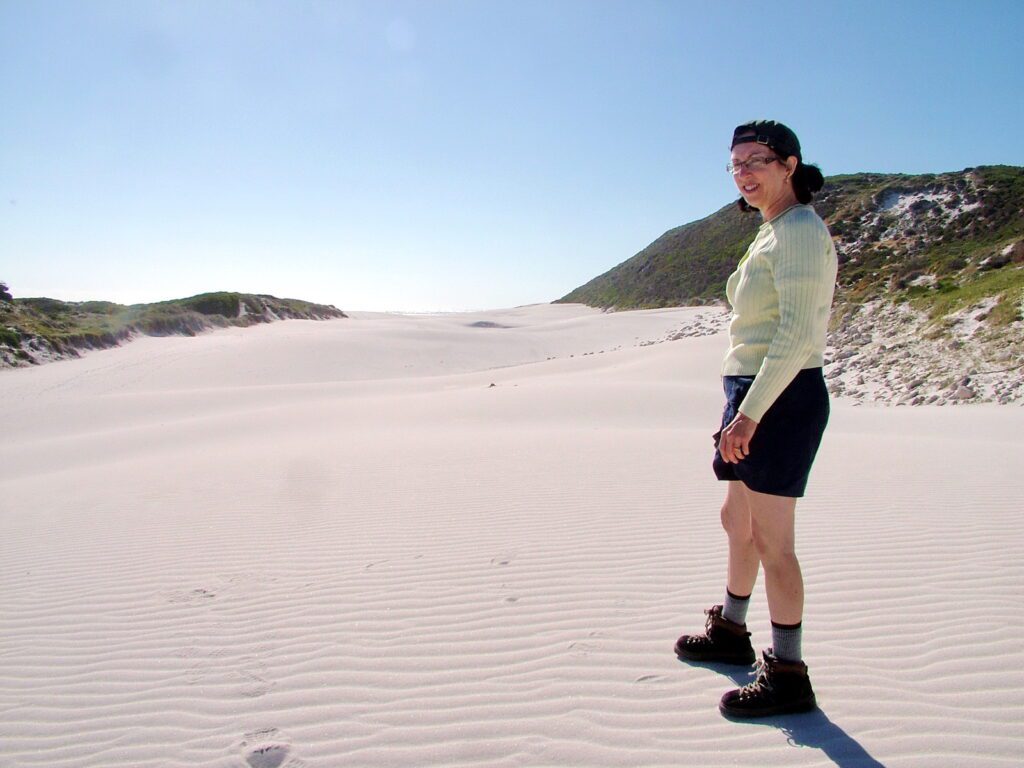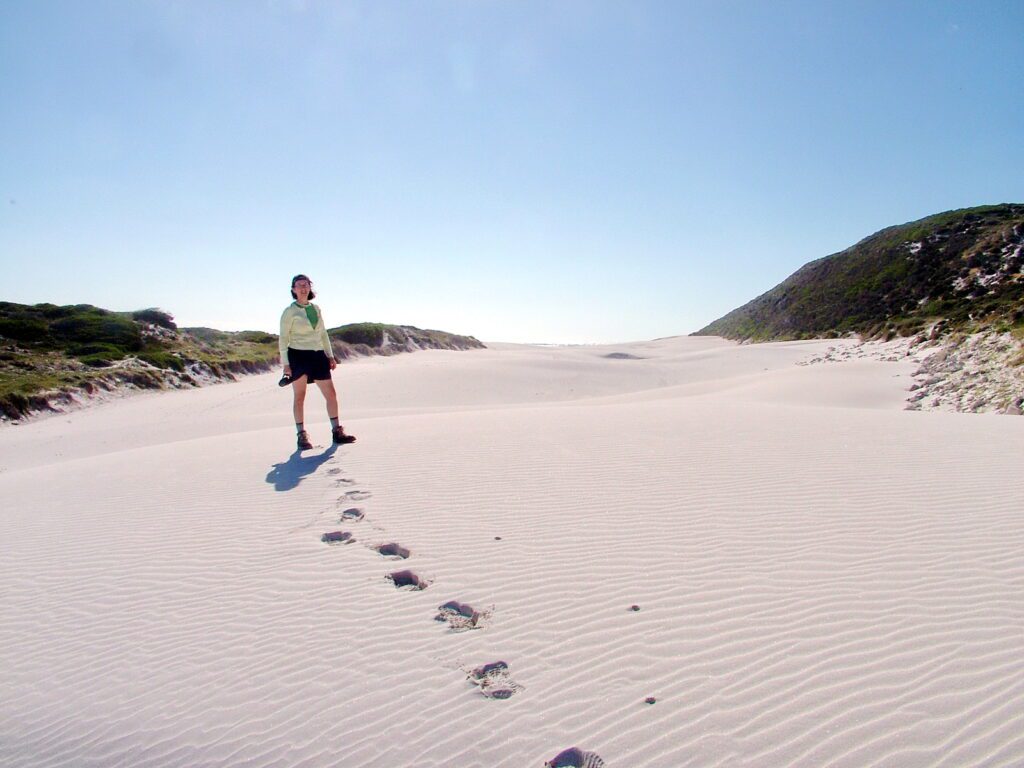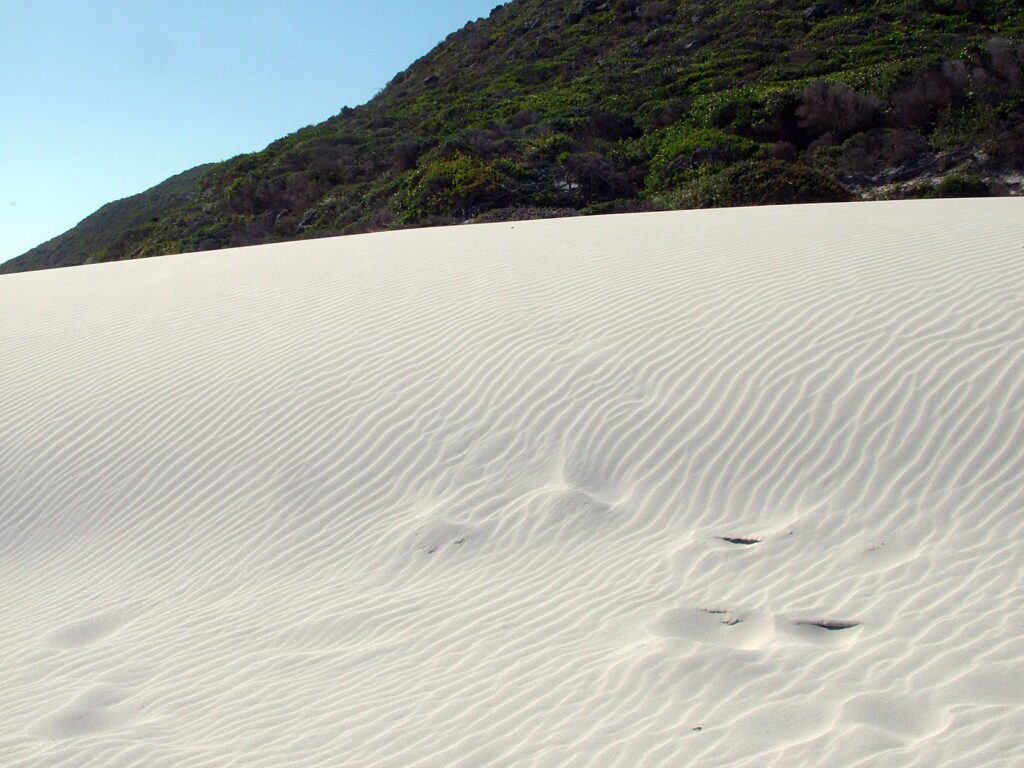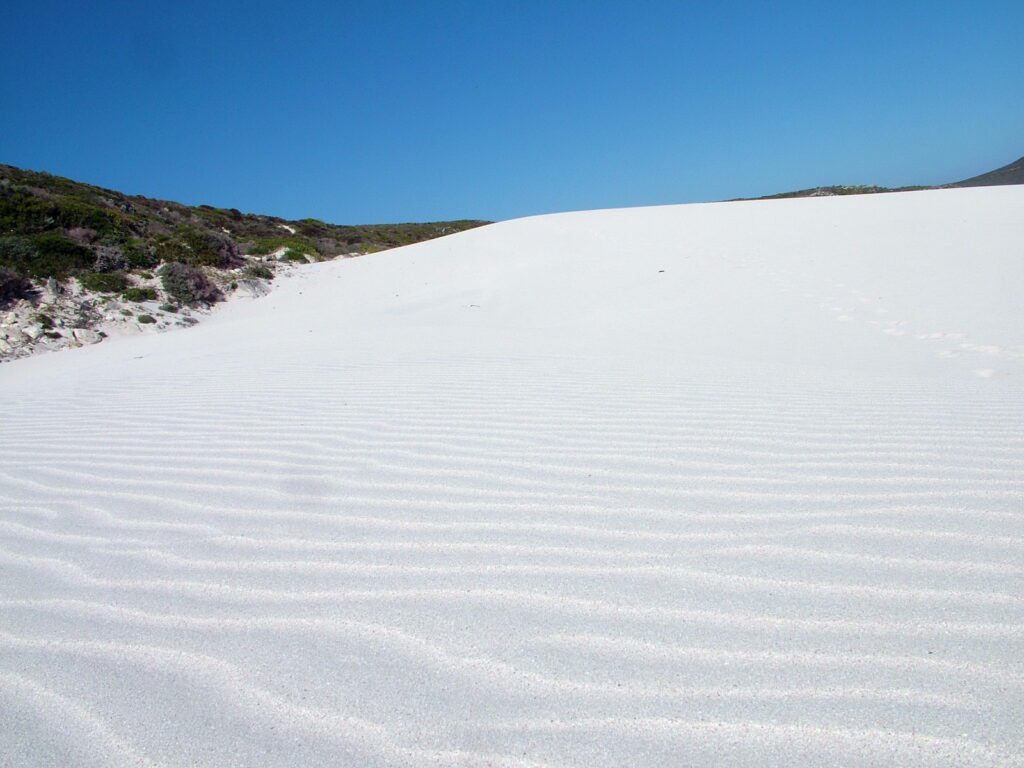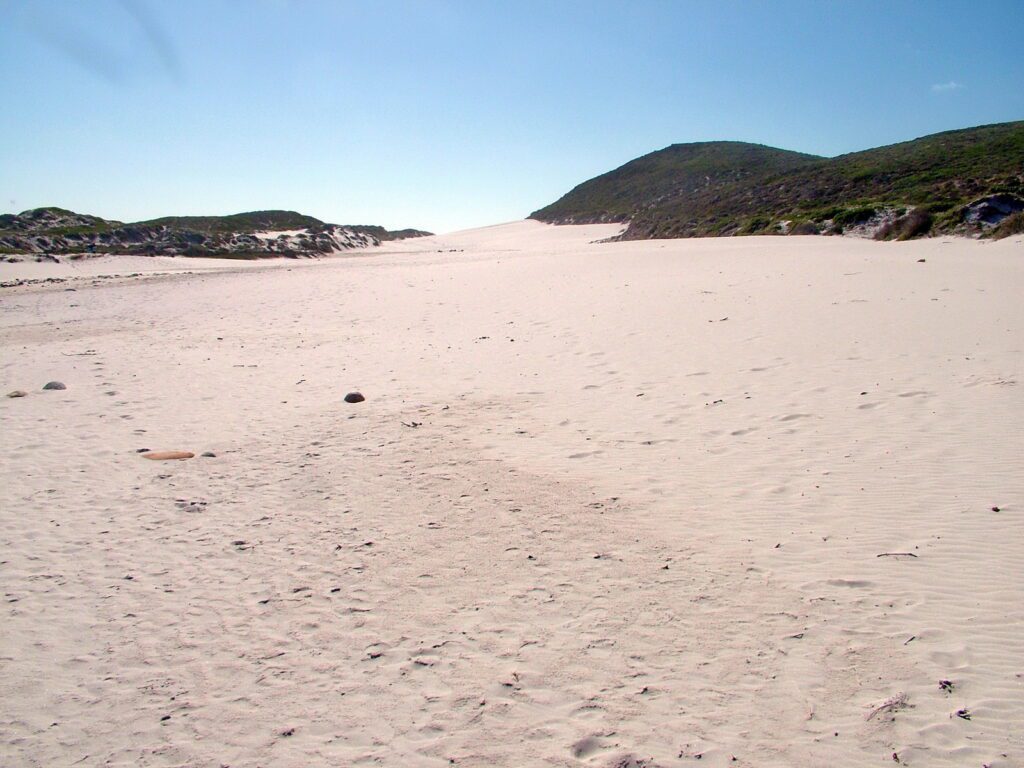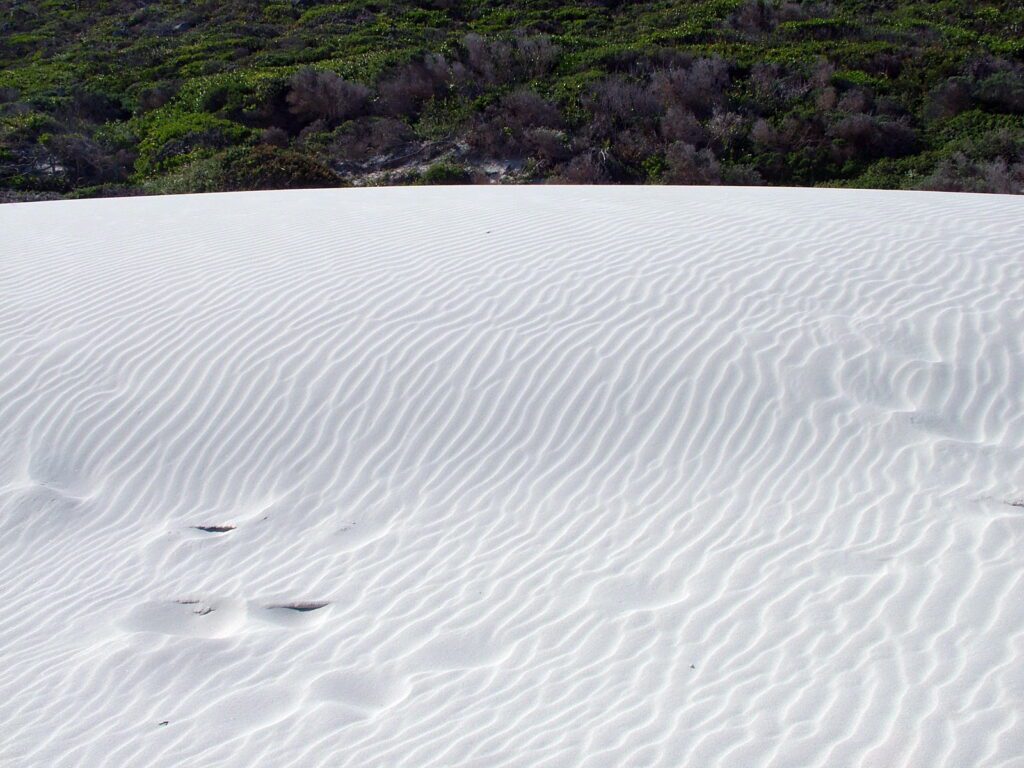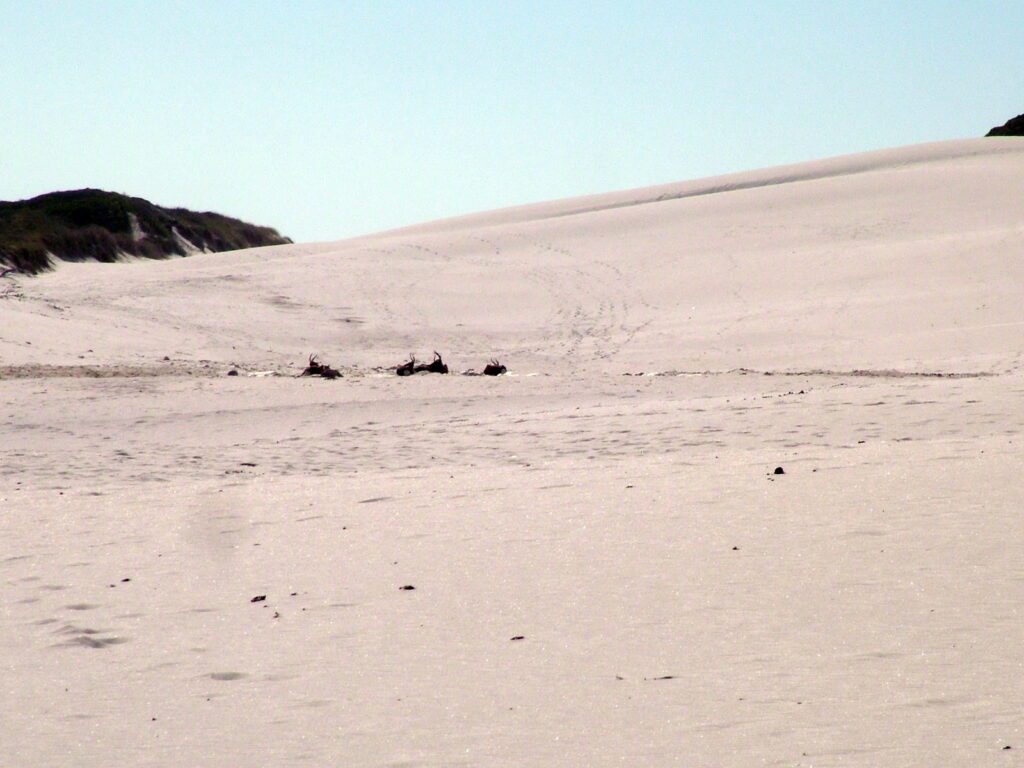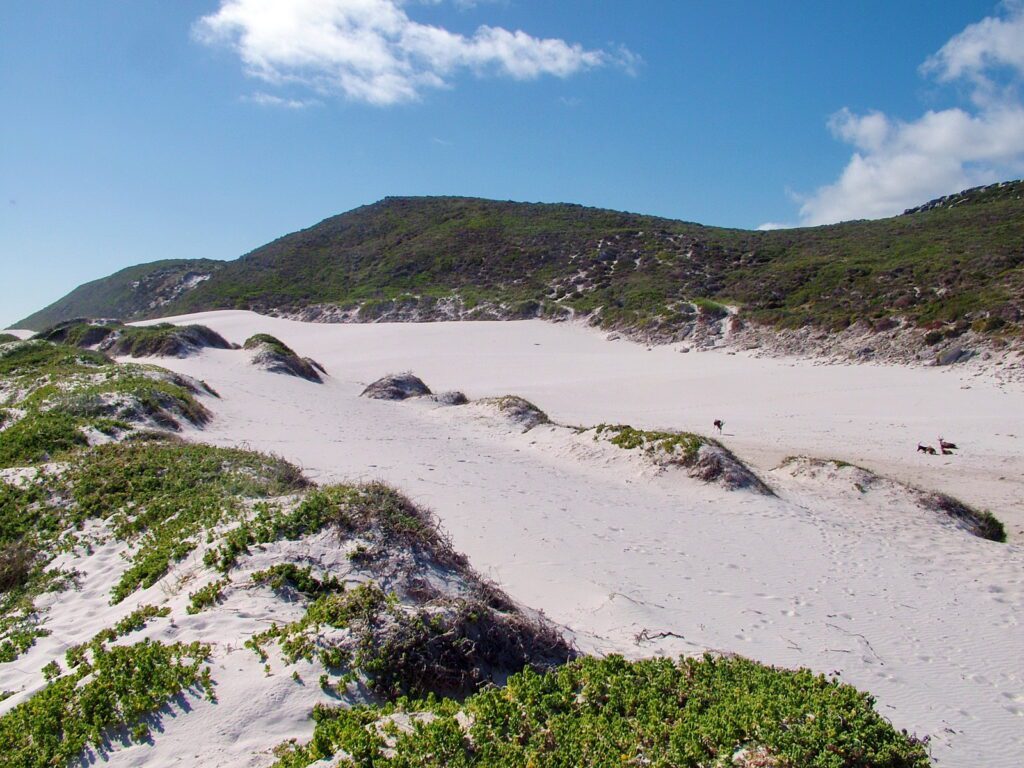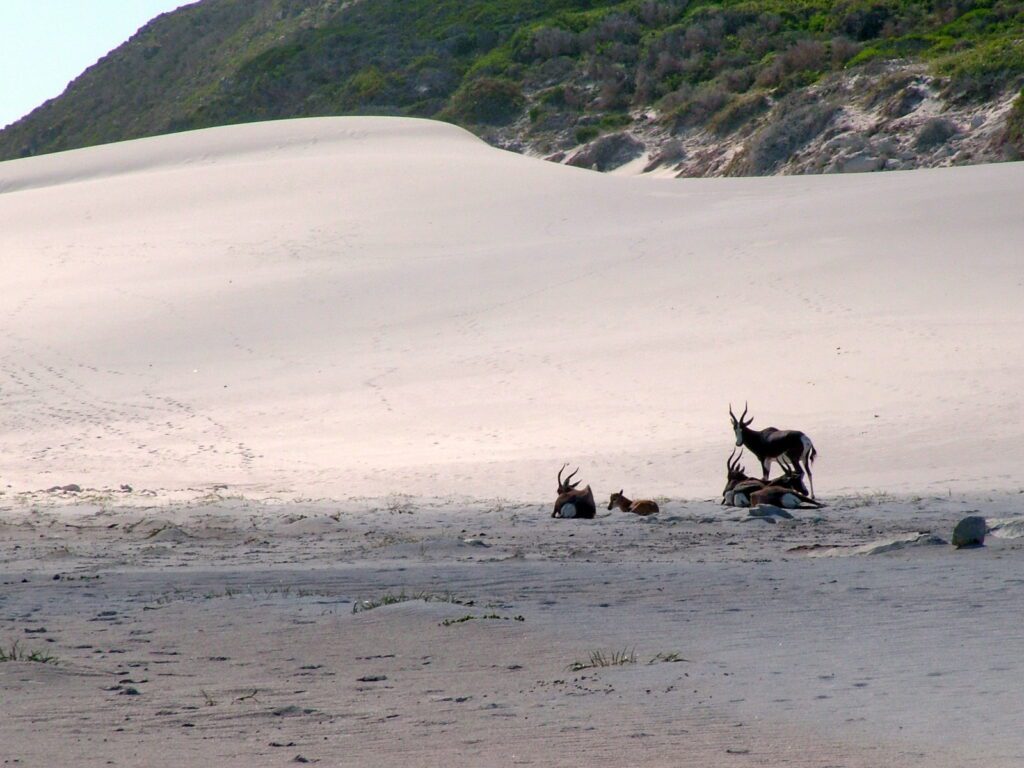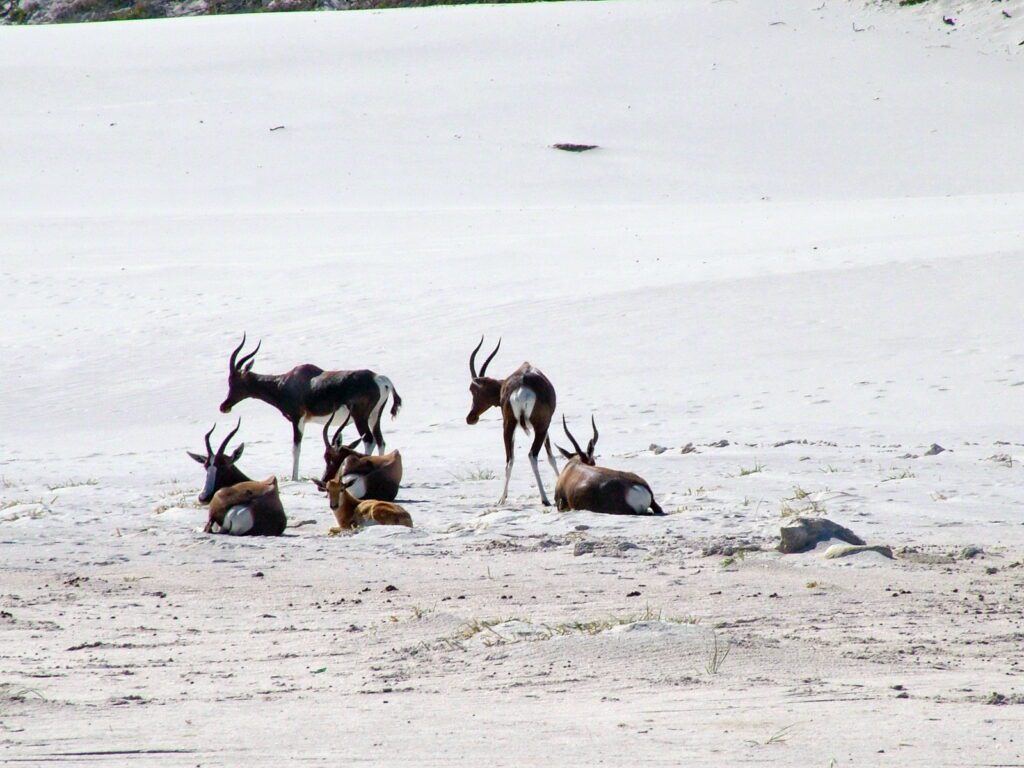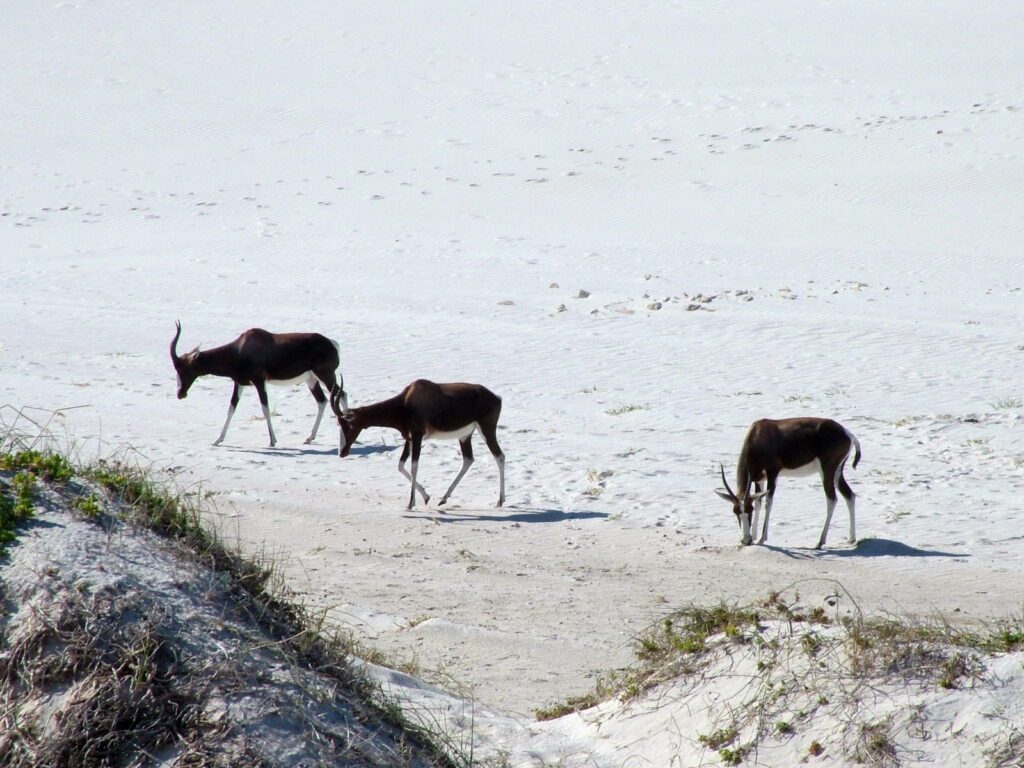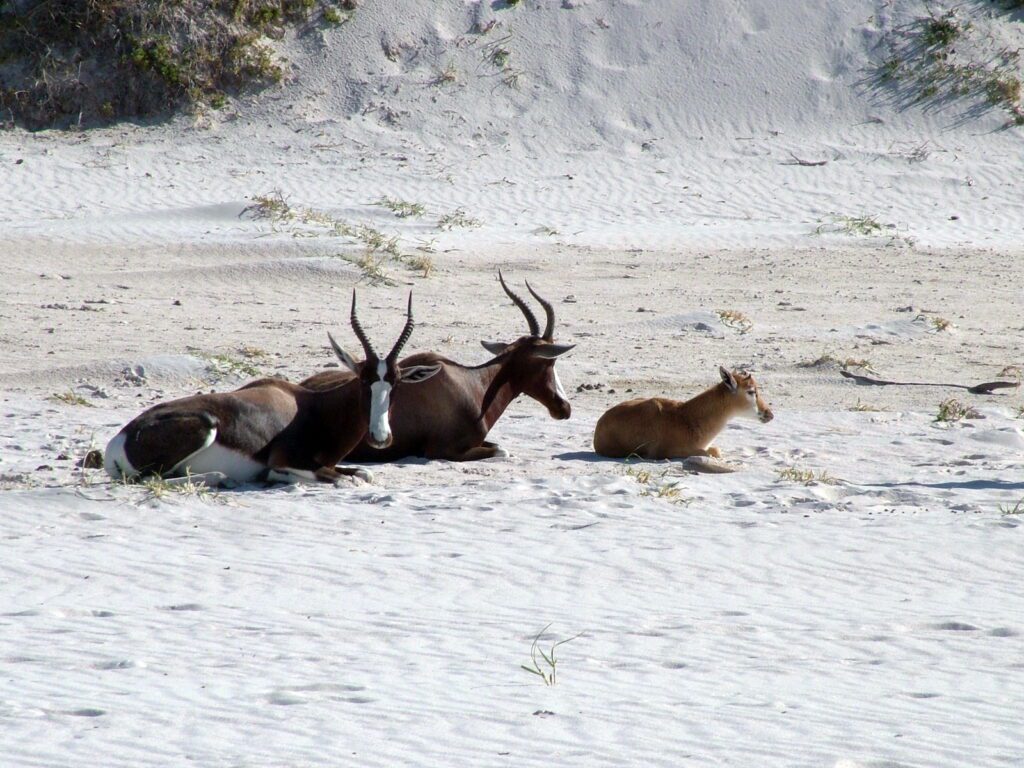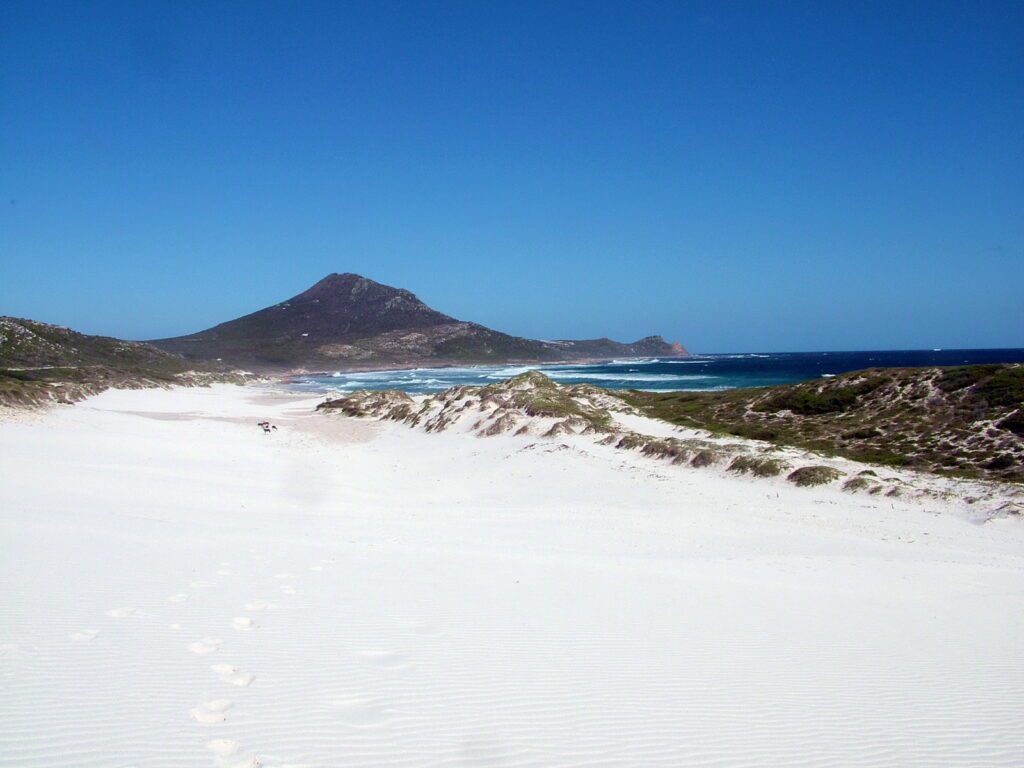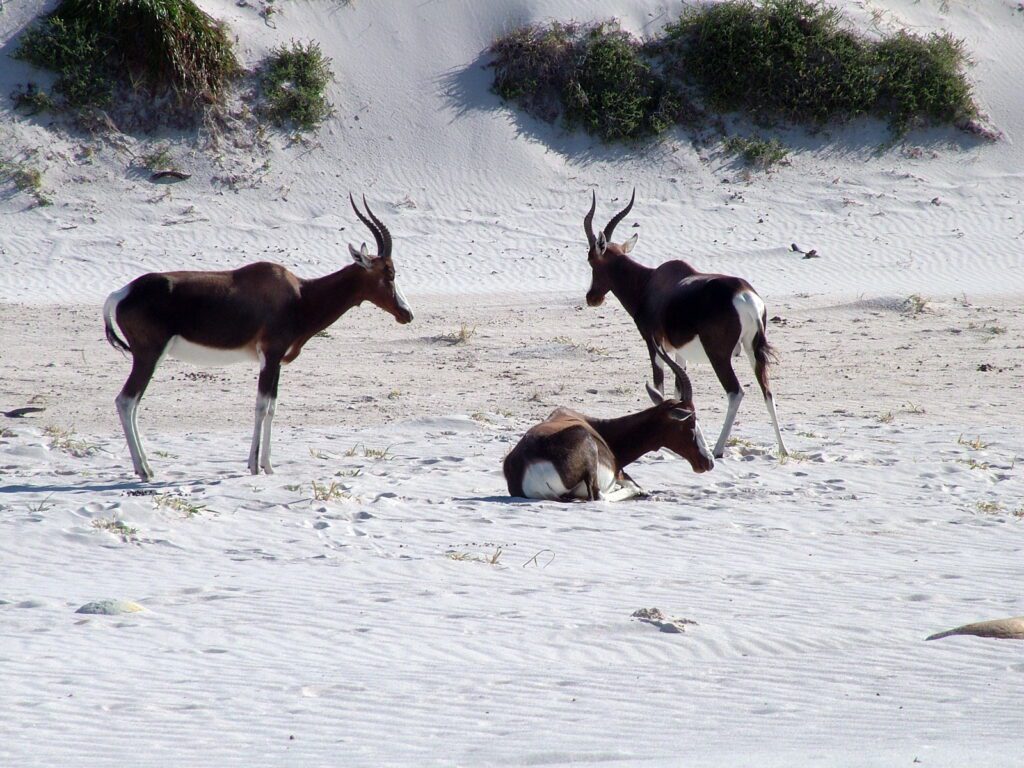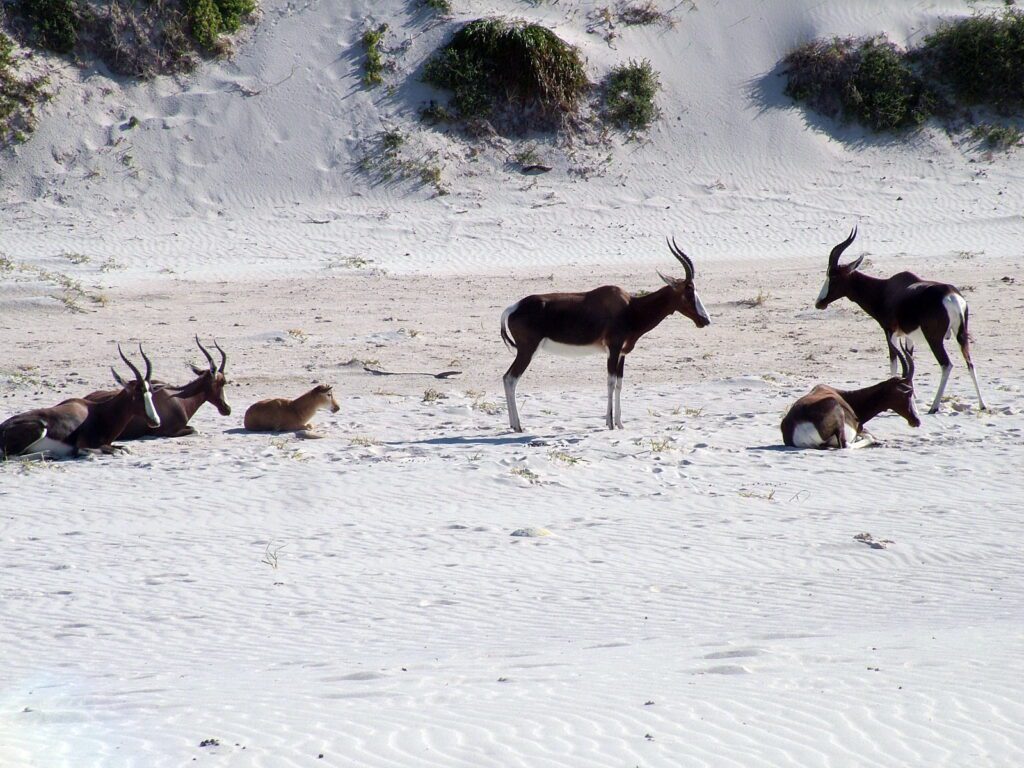Together with Bonteboks at Platboom Beach, South Africa
When Bob and I set off from Cape Point at the Cape of Good Hope in South Africa in search of the distant stretch of glistening white sand seen from the lookout, we were in for a big surprise and a treat when we spotted a small herd of bonteboks.
At the beginning of our short hike we discovered a unique landscape of unspoiled sand dunes, timeless in its beauty.
These pristine coastal dunes comprise part of the area called Platboom Beach, considered to be one of Cape Point’s most deserted beaches.
The idea of exploring uncharted territory exhilarated us, as we stepping foot onto the undisturbed surface of the fine golden sand. Our footsteps would soon be blown away with the shifting sands in the coming days.
What a sense of uninhibited freedom as we stepped out across the open sand.
Running parallel to Platboom Beach on the Atlantic Ocean, the dune system is a result of wind-driven sand.
The concentric nature of ripples on the upwind side of the nearest dune was mesmerizing in its perfection.
It was a little unnerving to find ourselves alone in that wild place. The only sounds were waves crashing against the shore and our own hushed voices. We treasured the seclusion and untouched natural beauty of the bone-white mounds of sand.
The dune formation seemed to stretch to infinity so Bob and I let our imaginations soar.
It wasn’t long before our exploration turned up traces of some previous activity. Pockmarks half filled with grains of sand told us that some animals had passed that way in the recent past.
A scan of the landscape through our binoculars revealed a small herd of antelopes up ahead, but the heat haze made it difficult to determine the species.
We gave a wide berth to the group of animals as we gain a better vantage point.
It was exciting to realize that we had found a small herd of Bonteboks complete with a young calf.
Bonteboks occur naturally in the region of the Western Cape. These animals were wiling away the hot afternoon in seclusion in the shelter of the dunes.
Only active during the daytime, bonteboks wander the coastal grass plains and graze on the fynbos vegetation. This type of vegetation, which is made up of fire-adapted plants, is only found in South Africa.
These animals are among the rarest of antelopes in South Africa. We had never even heard of them before.
As we neared the small herd, we were able to really appreciate their striking facial markings. The white “mask” is called a threat mask, and oddly enough, it resembles the helmet of a medieval knight. It is intended to intimidate predators such as lions, leopards and cheetahs.
A glance to our rear reminded us that we were not very far from the Cape of Good Hope, and the Bonteboks appeared as mere specks in the distance.
Bonteboks, like so many wild animals, were killed almost to the point of extinction because they were considered pests. The population of bonteboks in the Western Cape today rests at about 3,000.
This is all thanks to the efforts of Alexander van der Bijl, who corralled the last 17 bonteboks to protect them in 1837 on his farm. In 1931, the animals were transferred to Bontebok National Park to conserve the species. Bonteboks are still considered extinct in their natural habitat, and yet, there we were seeing them in the wild landscape of Platboom Beach.
Platboom Beach at Cape Point National Park had really delivered a unique experience with us seeing the wild bonteboks. A sand-blown world of true beauty, wild and unspoiled.
Frame To Frame – Bob and Jean

